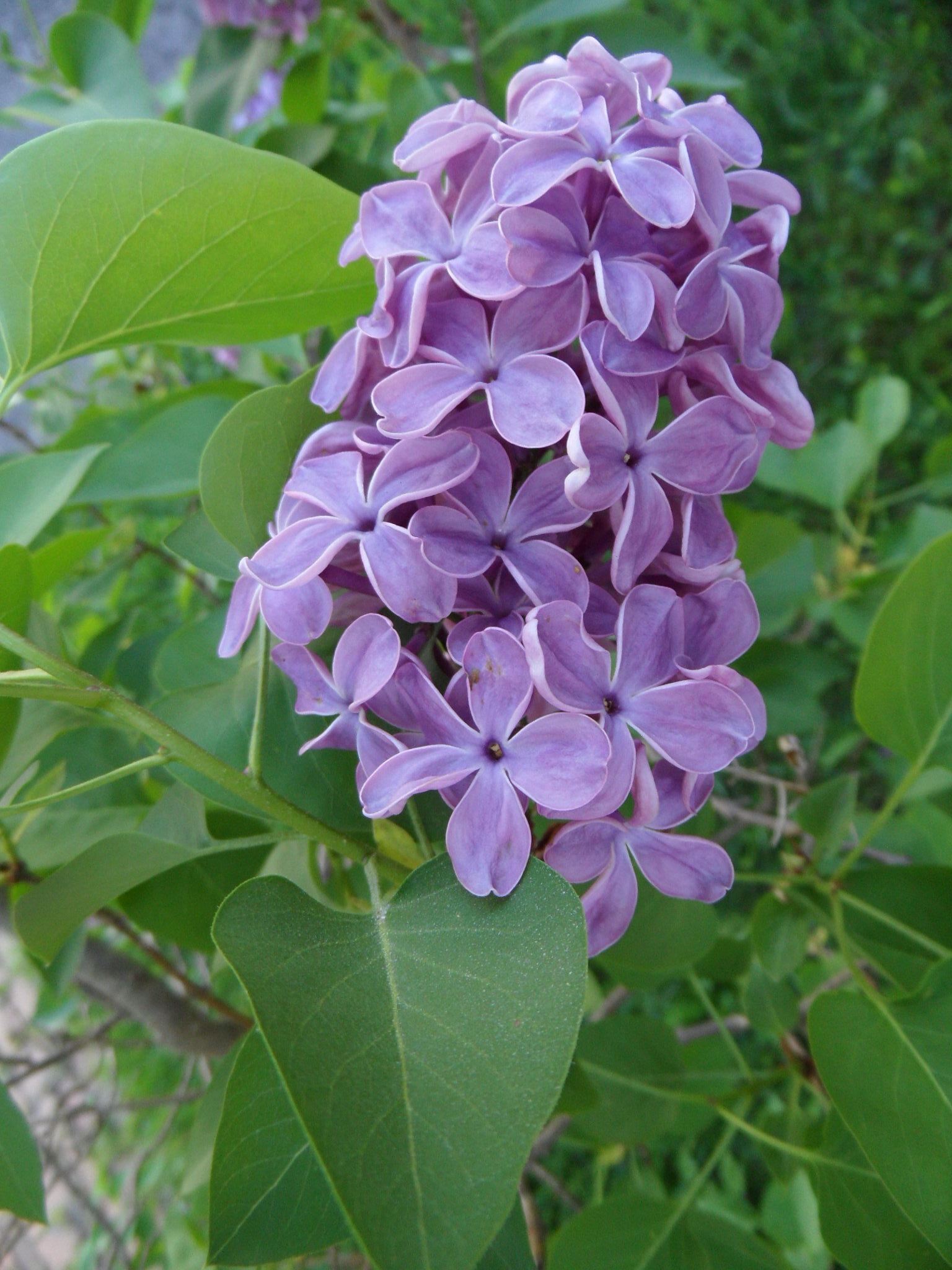
Greek syrinx — reed, after the nymph who, in mythology, was transformed into a reed, hence also a hollow-stemmed reed pipe. The common name is derived from the Persian nilak, meaning bluish.
Deciduous, rarely evergreen shrubs and occasionally small trees. Leaves opposite, mostly simple, occasionally lobed or pinnate. Flower clusters branched, often strongly fragrant. Flowers bisexual, with a tubular, 4-lobed corolla, white, pink, lilac, purple or red. Stamens 2, attached to the corolla, protruding or not. Ovary with 2 ovules in each chamber. Fruit a leathery, 2-valved, cylindrical or flattened capsule containing seeds with a basal wing.
Grown, often as hedges, for the fragrant flowers in spring.
Softwood cuttings; cultivars by grafting to privet stocks or lilac seedlings, or by budding. Care should be taken to avoid the rootstock overtaking the scion. Also stratified seed, root cuttings and layers.
Source of a perfume extract used in cosmetics, etc. S. vulgaris stems are used as pipes.
Capsule springing open at maturity (in contrast to the drupe-like fruits of the closely related Ligustrum).
OPCAA collection is held by Digger's Seeds at the Garden of St Erth, Blackwood, Vic, and another large collection is held at Flemings Nsy. The most extensive collection is at Mt Lofty Bot. Garden, Adelaide.
About 25 species from SE Europe and Himalaya to E Asia.
McKelvey (1928), Sax (1945), Griffin & Maunder (1985), Fiala (1988), Green (1989), Taylor (1990). Cultivars: The International Cultivar Registration Authority is at the Royal Botanical Gardens, Hamilton, Ontario, Canada. Periodical: The International Lilac Society Inc. produces an informative technical publication called Lilacs.
Source: (2002). Oleaceae. In: . Horticultural Flora of South-eastern Australia. Volume 4. Flowering plants. Dicotyledons. Part 3. The identification of garden and cultivated plants. University of New South Wales Press.
